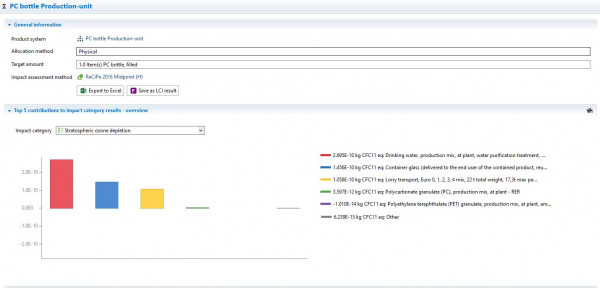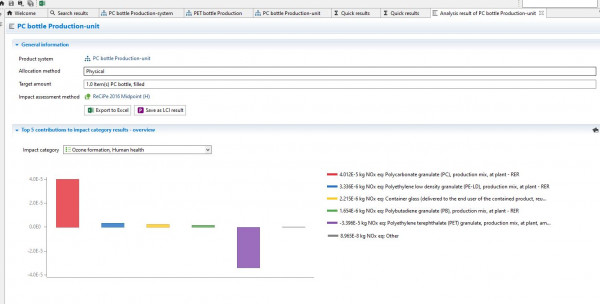Hi, I am currently using OpenLCA 1.10.3 and practising with the tutorial named GreenDelta_Bottle_Tutorial_1_10_june2020, which uses the ELCD database.
I am new to OpenLCA and still confused about what process type to choose when creating a product system.
I individually created two similar product systems by using the same reference process (PC Bottle Filling).
I selected the option "Auto-link processes" to create both product systems, but for one product system I chose the process type as "system process", and for the other product system, I selected the process type as "unit process".
Then, I opened both product systems and clicked on the "calculate" button to see whether there would be any difference in the results when "Quick results" was selected as the calculation type - you are able to select which type of calculation you want after selecting the "calculate" button.
I repeated the step above, but I chose "Analysis" as the calculation type.
The chosen impact method was ReCiPe 2016 MidPoint(H).
Question 1: When the calculation mode is set to "Quick results", why do I obtain different results for similar impact categories for both the product system with the process type as "system process" and for the product system with the process type as "unit process"?
The above diagram is for the product system with process type as system process.

The above diagram is for the product system with process type as system process.
Question 2: And for the product system with the process type as "unit process", "Quick results" and "Analysis" provide the same results for the same impact categories. Why does this occur even though I selected the "Auto-link processes" option when creating the product system? I assume that all processes related to the PC bottle should be linked because of how they are setup in the tutorial. And I understand from the OpenLCA user manual that "Quick results" only calculate direct impacts and do not consider upstream impacts, which are included in "Analysis" results.

The diagram above is for the case where the calculation type is "Analysis".

The diagram above is for the case where the calculation type is "Quick results".
Question 3: For a product system in or not in "Auto-link processes" mode, how can I manipulate the product system so that I obtain the overall environmental impact from all upstream processes and the reference process combined?
Question 4: How is the impact of a product system analysed (in "Quick results" mode) when a reference process is selected and the process type of the product system is "unit process"? For example, for a chosen impact method, is the impact category only calculated for the reference process?
Thanks in advance.
Karo